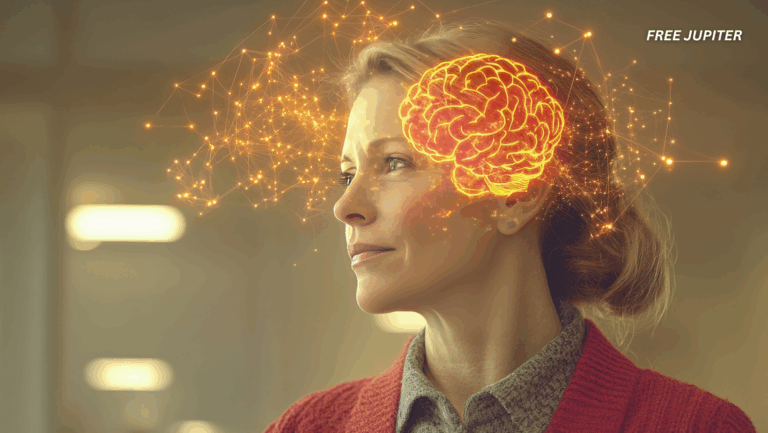If you’ve ever wondered why your dog looks at you like you’re the center of the universe, or why you can’t help but melt when they wag their tail at the door, science has an answer. Behind those soulful eyes and playful greetings is a powerful chemical reaction in the brain. Every time you and your dog connect, both of your bodies release oxytocin, often nicknamed the “love hormone.” It’s the same chemical that helps parents bond with their babies, or close friends form lasting trust.
This means the relationship you share with your dog isn’t just emotional, it’s biological. And the more scientists study it, the clearer it becomes that human-animal bonds are one of the most rewarding and natural connections we can have.
Why Your Dog’s Wagging Tail Means More Than You Think
Picture this: you’ve been out for just ten minutes, maybe grabbing the mail or running to the corner store. The moment you step back inside, your dog acts like you’ve returned from a year-long expedition. The tail wags, the eyes sparkle, the joyful bark fills the air. It’s adorable, sure, but it’s also science.
When a dog sees its owner, its brain releases oxytocin, sometimes called the “love hormone.” This same chemical is involved when humans bond with their babies or feel close to loved ones. In dogs, it sparks warmth, trust, and affection. And here’s the best part: the feeling goes both ways. Studies show that when owners and dogs interact, both brains light up with oxytocin, creating a shared rush of connection.
Why Dogs Love Humans – New Research
Read more: MRI Scans Show Your Dog Loves You More Than Other Dogs Or Even Their Favorite Snacks
The Chemistry of Canine Love
Oxytocin is a hormone produced in the brain that plays a starring role in social bonding. In people, it’s released during hugs, holding hands, or even sharing a laugh. For dogs, gazing into your eyes or leaning against your leg can trigger that same chemical surge.
Japanese researchers once tested this by letting dogs and owners simply look at each other. The longer the gaze, the higher the oxytocin levels rose in both species. It’s as if staring lovingly into your pup’s eyes sets off a built-in feedback loop of affection, kind of like nature’s own “like” button.
This explains why dog owners often feel their pets truly understand them. The chemistry isn’t an illusion; it’s a biological connection reinforcing what your heart already knows.
Not Just Dogs: Other Animals Join In
Dogs may be champions of oxytocin magic, but they’re not the only ones. Cats, despite their reputation for aloofness, also trigger oxytocin releases in owners, though often in subtler ways, like when they purr in your lap or gently head-bump your arm.
Horses, too, can share this bond. A study found that when riders spent time grooming or softly talking to their horses, both animal and human showed signs of calm and mutual trust, with oxytocin playing a role. Even interactions with therapy animals—from rabbits to dolphins—have been linked to stress relief and stronger emotional well-being.
It seems that oxytocin is the universal language of interspecies friendship.
Why Evolution Favors the Bond
From an evolutionary standpoint, this deep dog-human bond is no accident. Dogs were domesticated thousands of years ago, and their survival depended on forming close partnerships with humans. Over time, dogs that were better at bonding with people likely thrived, passing on those traits.
Meanwhile, humans benefited from loyal companions who guarded homes, helped hunt, and provided comfort. The oxytocin loop may have been nature’s way of sealing the deal, turning a working partnership into something far more emotional.
In other words, when your dog looks at you with those big, soulful eyes, it’s not just cuteness at work. It’s millennia of evolution fine-tuning the art of interspecies friendship.
The Health Benefits for Humans
This bond doesn’t just feel good; it’s good for us. Research has linked dog ownership to:
- Reduced stress levels: Petting a dog can lower cortisol, the body’s stress hormone.
- Better heart health: Dog owners often have lower blood pressure and reduced risk of heart disease.
- Improved mood: Spending time with dogs has been shown to ease symptoms of depression and anxiety.
- More social interaction: Dogs get people out of the house, leading to more conversations and community ties.
One study even found that heart attack survivors who owned dogs lived longer than those who didn’t. Scientists suspect that oxytocin and the emotional boost from companionship are part of the reason why.
Dogs Get Benefits Too
Of course, the relationship isn’t one-sided. Dogs that bond closely with humans also enjoy health perks. Regular positive interaction with their owners lowers canine stress, keeps behavior balanced, and helps them adapt better to new situations. In fact, shelter dogs that receive consistent affection from volunteers often show reduced anxiety and increased chances of adoption.
So while you might think you’re just giving belly rubs, you’re also improving your dog’s emotional well-being.
Read more: Scientists Say Dogs Are Entering In a New Stage of Evolution
Everyday Proof of the Bond
Think about the little rituals you share with your pet. Maybe your dog perks up at the sound of your car pulling into the driveway, or insists on curling up near your feet while you work. These small acts are not random quirks—they’re daily demonstrations of oxytocin-fueled attachment.
Even the “guilty look” dogs give after chewing up your shoes isn’t necessarily guilt—it’s a display of sensitivity to your emotions, honed by thousands of years of companionship. Dogs read human cues better than almost any other animal, and their brains are wired to respond in ways that strengthen trust.
Beyond Pets: Therapy and Healing
The same science that explains dog-owner bonding also fuels the rise of animal-assisted therapy. Dogs trained to visit hospitals, nursing homes, or schools bring comfort, reduce loneliness, and even encourage physical activity.
For children with autism, therapy dogs can make social interactions easier. For veterans with PTSD, dogs often help reduce anxiety and create a sense of safety. In each case, oxytocin plays a starring role in turning simple interactions into meaningful emotional support.
A Love Story Written in Biology
The surge of oxytocin when dogs and humans connect shows that our bond isn’t just sentimental, it’s biological, measurable, and mutual. It proves what pet lovers have long suspected: that the loyalty and love we feel for our animals are genuinely reciprocated on a chemical level.
So, the next time your dog greets you like you’re the hero of their world, remember: beneath the wagging tail and excited bark is a brain swimming with oxytocin, syncing with yours. Science has confirmed what your heart has been saying all along, the love is real.
Image: Freepik.
Friendly Note: FreeJupiter.com shares general information for curious minds. Please fact-check all claims and double-check health info with a qualified professional. 🌱










